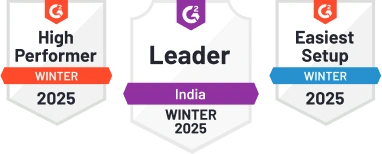Key Responsibility Areas (KRA) & Key Performance Indicators (KPI) for IT Teacher
1. Curriculum Development
KRA: Developing engaging and up-to-date IT course materials to enhance student learning.
Short Description: Creating relevant IT curriculum content.
- KPI 1: Percentage of student engagement with the curriculum.
- KPI 2: Rate of positive feedback on course materials.
- KPI 3: Alignment of curriculum with industry standards.
- KPI 4: Timeliness of curriculum updates.
2. Classroom Instruction
KRA: Delivering effective IT lessons that cater to diverse learning styles.
Short Description: Providing engaging IT instruction.
- KPI 1: Student performance improvement after instruction.
- KPI 2: Classroom participation levels.
- KPI 3: Completion rates of class assignments.
- KPI 4: Student satisfaction with teaching methods.
3. Student Assessment
KRA: Implementing fair and comprehensive assessment strategies to evaluate student progress.
Short Description: Assessing student learning effectively.
- KPI 1: Average student assessment scores.
- KPI 2: Assessment completion rates.
- KPI 3: Alignment of assessments with learning objectives.
- KPI 4: Feedback responsiveness to student queries on assessments.
4. Technology Integration
KRA: Integrating technology tools and resources to enhance IT education delivery.
Short Description: Leveraging technology for effective teaching.
- KPI 1: Usage frequency of tech tools in teaching.
- KPI 2: Student proficiency in using tech resources for learning.
- KPI 3: Integration of new tech trends in teaching practices.
- KPI 4: Impact of technology integration on student engagement.
5. Professional Development
KRA: Continuously improving IT teaching skills and knowledge through professional growth opportunities.
Short Description: Enhancing teaching competencies.
- KPI 1: Participation in IT-related professional development programs.
- KPI 2: Implementation of new teaching strategies learned.
- KPI 3: Peer feedback on teaching improvements post-development activities.
- KPI 4: Demonstrated growth in student outcomes after professional development.
6. Student Support
KRA: Providing guidance and support to students for academic and career success in IT.
Short Description: Supporting student growth and development.
- KPI 1: Student retention rates in IT programs.
- KPI 2: Accessibility and responsiveness to student queries.
- KPI 3: Success rate of students in IT certification exams.
- KPI 4: Feedback on the effectiveness of student support services.
7. Collaboration
KRA: Collaborating with colleagues and industry partners to enhance IT education quality.
Short Description: Fostering collaborative relationships.
- KPI 1: Participation in collaborative projects or research initiatives.
- KPI 2: Feedback on teamwork effectiveness from peers.
- KPI 3: Impact of collaborations on student learning outcomes.
- KPI 4: Integration of industry insights into teaching practices through collaborations.
8. Feedback Analysis
KRA: Analyzing student feedback to improve teaching methodologies and course materials.
Short Description: Utilizing feedback for continuous improvement.
- KPI 1: Frequency of feedback collection from students.
- KPI 2: Implementation of feedback-driven changes in teaching approaches.
- KPI 3: Student satisfaction levels post-feedback implementation.
- KPI 4: Improvement in student performance based on feedback-driven adjustments.
9. Program Evaluation
KRA: Evaluating the effectiveness of IT programs to ensure alignment with learning outcomes.
Short Description: Assessing program efficacy.
- KPI 1: Program completion rates among students.
- KPI 2: Alignment of program objectives with industry demands.
- KPI 3: Student satisfaction with program structure and content.
- KPI 4: Post-graduation success rates of students from the IT program.
10. Data-driven Decision Making
KRA: Utilizing data analysis to make informed decisions for enhancing IT educational outcomes.
Short Description: Making data-informed educational choices.
- KPI 1: Use of data analytics tools for performance tracking.
- KPI 2: Improvement in student outcomes based on data-driven interventions.
- KPI 3: Accuracy of predictions based on data analysis for educational enhancements.
- KPI 4: Feedback on the impact of data-driven decisions on teaching effectiveness.
Real-Time Example of KRA & KPI
[Insert a real-world example related to the IT Teacher]
KRA: Provide an example of how an organization or professional applies this KRA in real life.
- KPI 1: [Example of a measurable KPI]
- KPI 2: [Example of a measurable KPI]
- KPI 3: [Example of a measurable KPI]
- KPI 4: [Example of a measurable KPI]
Describe how these KPIs led to improved performance and success.
Key Takeaways
- KRA defines what needs to be done, whereas KPI measures how well it is done.
- KPIs should always be SMART (Specific, Measurable, Achievable, Relevant, Time-bound).
- Regular tracking and adjustments ensure success in IT Teacher.
Generate content in this structured format with clear, concise, and measurable KPIs while maintaining professional readability.







